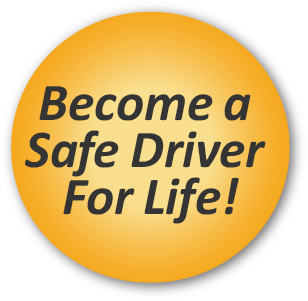Safe driving involves much more than memorizing traffic rules and glancing at your mirrors. While the basics of safe driving are important to master, you can further enhance your safety and comfort by utilizing proper driving posture behind the wheel. Optimum posture will help ensure that you are protected by the vehicle’s safety systems, including the head rest, seat belts, and airbags. In addition, it will keep soreness and fatigue at a minimum during those long road trips.
With that in mind, we’ve provided four tips to help improve your driving posture, and we’ve also made recommendations for handy stretches that will help combat any soreness you might encounter.
1. Always Buckle Up
This first tip is the most important: always wear your seat belt.
In Colorado, anyone 16 and older can be ticketed for not wearing one, but regardless of the potential legal consequences, the main reason to wear one is because doing so enhances safety immensely. Thousands of lives could be saved every year if everyone followed this simple but important guideline.
That said, wearing a seat belt correctly is just as important as wearing it in the first place. To ensure yours is on properly, make sure:
- The top belt is across the shoulders and chest. The bottom belt should lay over the hips.
- The seat belt is never worn behind the arm or back.
- The belt is adjusted to fit snugly when properly seated.
Additionally, wearing a seat belt too high can cause neck or abdominal injuries in the event of a collision, and a twisted seat belt won’t provide the proper protection.
Remember, seat belts and airbags are not an either/or solution—both systems work with each other for optimal safety. Even if your vehicle comes with curtain airbags and a roll cage, it’s still important to always buckle up.
2. Safety Starts With the Seat
A properly adjusted driver’s seat is necessary to ensure your safety and comfort, so always take time to adjust your position before hitting the road.
To position your seat correctly, ensure all adjustments are made with your upper back flat against the back of the seat. The seatback should be upright, and your body should sit at an angle of no more than 110 degrees. Your head should just be touching the headrest, and the headrest should be aligned with the height of your head.
When your legs are extended, they should slightly bend when touching the pedals, and your knees should be of equal height with your hips. Sitting too low can put extra stress on your legs and back. You should also be at least 10 inches away from the steering wheel. If you sit any closer, the airbag may not fully deploy before impacting your face.
If you can rest your wrists on top of your steering wheel, your seat is a safe distance from the wheel. Once you find this position, adjust all of your mirrors to sit at your eye level. This allows you to “lock-in” your adjustments. Once you know what your mirrors should reflect, you can easily achieve your proper posture.
3. Steering Wheel Positioning for Safety and Comfort
Once your seat is set, you can focus on adjusting the steering wheel. Your arms should have a slight bend of 120 degrees when holding the wheel. If they are too straight, bring your seat closer. Some vehicles also come equipped with extendable steering columns to help drivers make further adjustments.
When gripping the wheel, you will fare better if you use your fingers instead of your palms. A light grip reduces strain while still allowing for rapid steering response.
In Colorado, new drivers are taught to place their hands at the 9 and 3 o’clock positions on the wheel. In the past, instructors advised keeping hands on the 10 and 2 positions, but the modern use of lower hand placement is safer in the event of airbag deployment.
Using this hand placement also reduces stress and pain in the arms and shoulders. It allows you to comfortably rest your arms on the armrests while still allowing you to efficiently turn the wheel.
4. Safe Stretching for Long Drives
Long hours on the road can cause pain and stiffness in even the most experienced drivers, and new drivers out on their first road trips may find this to be an unexpected drawback. Fortunately, there are several safe stretches drivers can use to prevent this.
When driving, you can use the following stretches to help relieve pain and tightness while also keeping your eyes on the road:
- Gentle side-to-side neck tilts will help ease neck and shoulder pain.
- Shoulder shrugs with slow, rolling motions will stretch your shoulders and upper back.
- Back arches will stretch your entire back.
When you’ve stopped and parked, you can get out of the vehicle to take a short walk in order to prevent and alleviate stiffness, as doing this will increase blood circulation and help the body feel less tense. Though minor aches and pains may not seem like a big deal, you can be distracted by them. Anything that takes your mind off of the road is dangerous, so doing a few simple stretches can be a great way to help keep your attention on your driving. Additionally, stretching can also help relieve stress caused by busy commutes and aggressive drivers.
Closing Up
We hope that the recommendations in this article help clarify the steps you can take to position yourself properly before heading out on a drive. By wearing your seatbelt properly; adjusting your posture, seat, and mirrors before taking off for a drive; and utilizing gentle stretches on the road, you can enhance your safety, comfort, and stress levels simultaneously. Happy driving!
DriveSafe Driving Schools Can Help with Your Behind-the-Wheel Goals!
As the largest and most trusted driving school in Colorado, DriveSafe has helped thousands of students learn the skills they need to be competent and confident behind the wheel. Our expert instructors are passionate about their work, and they go out of their way to create a learning environment where students feel supported and encouraged throughout the entire drivers education process.
Whether you’re looking for private driving lessons, a traditional drivers ed course, or online drivers ed options, we can help! Browse our services, or contact one of our friendly customer service representatives with any questions. We look forward to hearing from you!
This is a guest post written by Rachel Perez.













